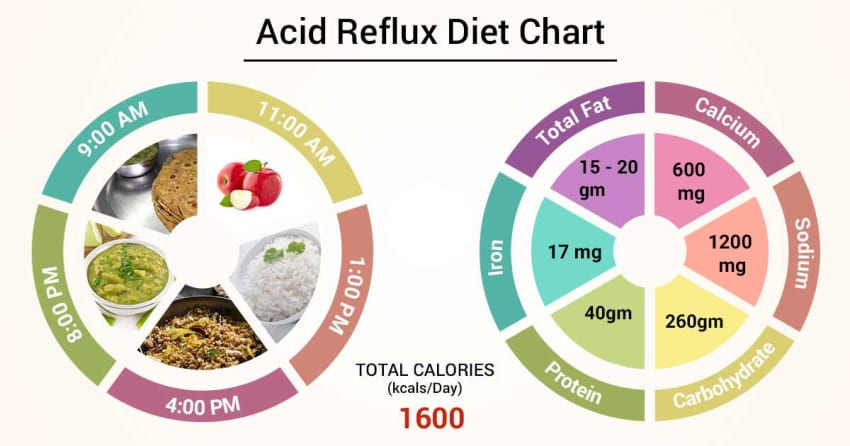Anyone who suffers with acid reflux disease (also known as GERD) knows fully well that the foods they eat can dramatically alter the way they feel. In most cases, certain foods must be avoided to keep their symptoms under control. Still, finding the right mix of food items can be a struggle for some people as they work hard to develop a tasty, yet comfortable acid reflux menu for themselves or someone they love.
Make a Food Diary
No one likes having to take the time to track every morsel of food that goes into their mouth, but when you suffer with acid reflux and GERD, it is vital that you determine what your food triggers are so that you can limit them as much as you can. This will only be possible if you track your food intake for a few weeks, writing down everything you eat (and when you eat it) and then monitor your acid reflux symptoms. This simple food diary will be your key to determining which foods are safe choices for you and which are not.
While everyone’s triggers are different, there are some food categories to keep a special watch on: dairy products, meats, beverages, snacks, veggies, fruit, grains and fats. Depending what you eat from these food groupings, you may discover your symptoms worsening or even getting out of control.
Here’s a sample menu for a GERD (Acid Reflux) diet:
Breakfast:
- Scrambled eggs
- Whole grain toast
- Fresh fruit
- Green tea
Lunch:
- Grilled chicken breast
- Brown rice
- Steamed vegetables (e.g. broccoli, carrots)
- Herbal tea
Dinner:
- Baked salmon
- Quinoa
- Roasted root vegetables (e.g. sweet potatoes, carrots)
- Almond milk
Snacks:
- Fresh fruit
- Yogurt
- Nuts
- Rice cakes
Beverages:
- Water
- Almond milk
- Herbal tea
Foods to avoid:
- Fried foods
- Fatty meats
- Citrus fruits
- Tomatoes
- Chocolate
- Spicy foods
- Carbonated drinks
- Alcohol
Note: This is a sample menu and may not work for everyone. Individual needs and dietary restrictions may vary. Consult with a doctor or a dietitian for personalized advice.
Food to Avoid With GERD
Some acid reflux patients can tolerate spicy foods with little problem, while others can not even tolerate a single bite. The same is true for many other foods as well. Still there are certain foods that most acid reflux patients should avoid. They include:
- Whole milk or dairy products (the fat content is too hig and can cause extra acid build up
- Greasy foods
- Fatty foods
- Acidic foods (this includes items like tomatoes and citrus fruits)
- Fruits packaged in heavy syrup
- Alcoholic beverages
- Caffeine
- Carbonated beverages
- Spicy foods
- Chocolate
- Fried Foods
Foods That Are Safe For Acid Reflux Sufferers
Before you panic and think that there is nothing out there that you can eat when you suffer with GERD, rest assured that there are plenty of alternatives to the food items listed above.
For instance, instead of eating french fries, try baking your potato or even baking wedges in the oven until they are appear brown and crispy. And instead of using whole milk on your morning cereal, try skim or low fat milk instead. Better yet, try soy or rice milk for an even easier digestion.
So, what are some of the good foods that acid reflux sufferers can enjoy? Here are a few to start planning your menus with:
- Whole Grains
- Low fat dairy
- Fresh fruits (apples, bananas, papaya, pineapple , etc)
- Vegetables such broccoli, peas, leeks, onions, and more
- Ketchup (use in small amounts)
- Low fat cookies and cakes
- Non-caffeinated/carbonated drinks like herbal tea, water, and more
- Pretzels, baked chips, crackers, etc.
- Lean meats
Developing an Acid Reflux Menu Plan
When planning your weekly menu, be sure to include food that will help your body better digest what you eat in order to keep those stomach acids from going inot overdrive production. Here are some really good choices to add to your acid reflux and GERD diet menu:
Low-Fat Proteins
Protein rich foods like lean meats and even protein powders that can be used in your recipes or made into speciality drinks can help to increase the pressure of the sphincter muscle, which can help to close that flap after swallowing. This can keep stomach acids from regurgitate back into the esophagus.
Fiber
Research has shown that people who eat a diet rich in fiber show less esophageal damage than those who do not when acid reflux is a concern.
Tropical Fruits
Tropical fruits such as pineapple and papaya are rich in bromelain and papain, enzymes which help to aid digestion and lower stomach acid production.
Remember, when creating a new healthier diet plan, be sure to use plenty of fresh ingredients that fit within the healthy acid reflux food choices. Of course splurging once in awhile on something that is on the “to avoid” list is okay, as long as you don’t over do it. Remember, balance is the key to keeping acid reflux symptoms under control.
Changing the way you eat and prepare your foods is not always easy; but it is essential when trying to deal with GERD, or any other medical condition, for that matter. But, as is the case for most people, striving to eat the most well balanced, healthiest diet will help to stave off those painful symptoms and put you onto the road the recovery.
Striving to eat a healthy well balanced and acid reducing diet will not only keep your GERD under control but will help you to maintain a much healthier lifestyle.
